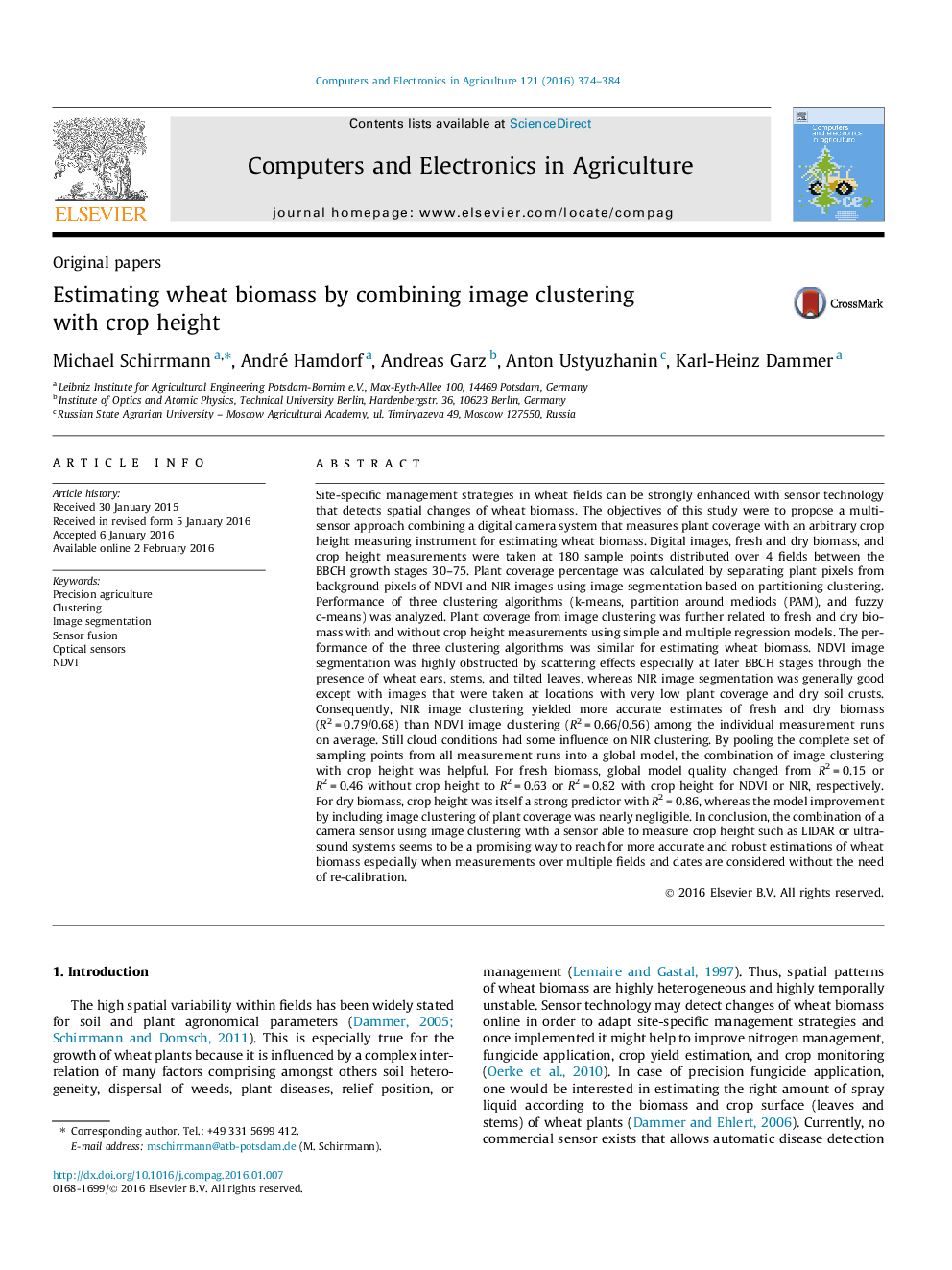| کد مقاله | کد نشریه | سال انتشار | مقاله انگلیسی | نسخه تمام متن |
|---|---|---|---|---|
| 84018 | 158857 | 2016 | 11 صفحه PDF | دانلود رایگان |
• Light scattering by ears, stems and twisted leaves obstructed NDVI segmentation.
• Partitioning clustering algorithms performed equally for biomass estimation.
• Wheat biomass estimation by image clustering was time- and location dependent.
• Calibration needs were prevented by combining image clustering with plant height.
Site-specific management strategies in wheat fields can be strongly enhanced with sensor technology that detects spatial changes of wheat biomass. The objectives of this study were to propose a multi-sensor approach combining a digital camera system that measures plant coverage with an arbitrary crop height measuring instrument for estimating wheat biomass. Digital images, fresh and dry biomass, and crop height measurements were taken at 180 sample points distributed over 4 fields between the BBCH growth stages 30–75. Plant coverage percentage was calculated by separating plant pixels from background pixels of NDVI and NIR images using image segmentation based on partitioning clustering. Performance of three clustering algorithms (k-means, partition around mediods (PAM), and fuzzy c-means) was analyzed. Plant coverage from image clustering was further related to fresh and dry biomass with and without crop height measurements using simple and multiple regression models. The performance of the three clustering algorithms was similar for estimating wheat biomass. NDVI image segmentation was highly obstructed by scattering effects especially at later BBCH stages through the presence of wheat ears, stems, and tilted leaves, whereas NIR image segmentation was generally good except with images that were taken at locations with very low plant coverage and dry soil crusts. Consequently, NIR image clustering yielded more accurate estimates of fresh and dry biomass (R2 = 0.79/0.68) than NDVI image clustering (R2 = 0.66/0.56) among the individual measurement runs on average. Still cloud conditions had some influence on NIR clustering. By pooling the complete set of sampling points from all measurement runs into a global model, the combination of image clustering with crop height was helpful. For fresh biomass, global model quality changed from R2 = 0.15 or R2 = 0.46 without crop height to R2 = 0.63 or R2 = 0.82 with crop height for NDVI or NIR, respectively. For dry biomass, crop height was itself a strong predictor with R2 = 0.86, whereas the model improvement by including image clustering of plant coverage was nearly negligible. In conclusion, the combination of a camera sensor using image clustering with a sensor able to measure crop height such as LIDAR or ultrasound systems seems to be a promising way to reach for more accurate and robust estimations of wheat biomass especially when measurements over multiple fields and dates are considered without the need of re-calibration.
Journal: Computers and Electronics in Agriculture - Volume 121, February 2016, Pages 374–384
